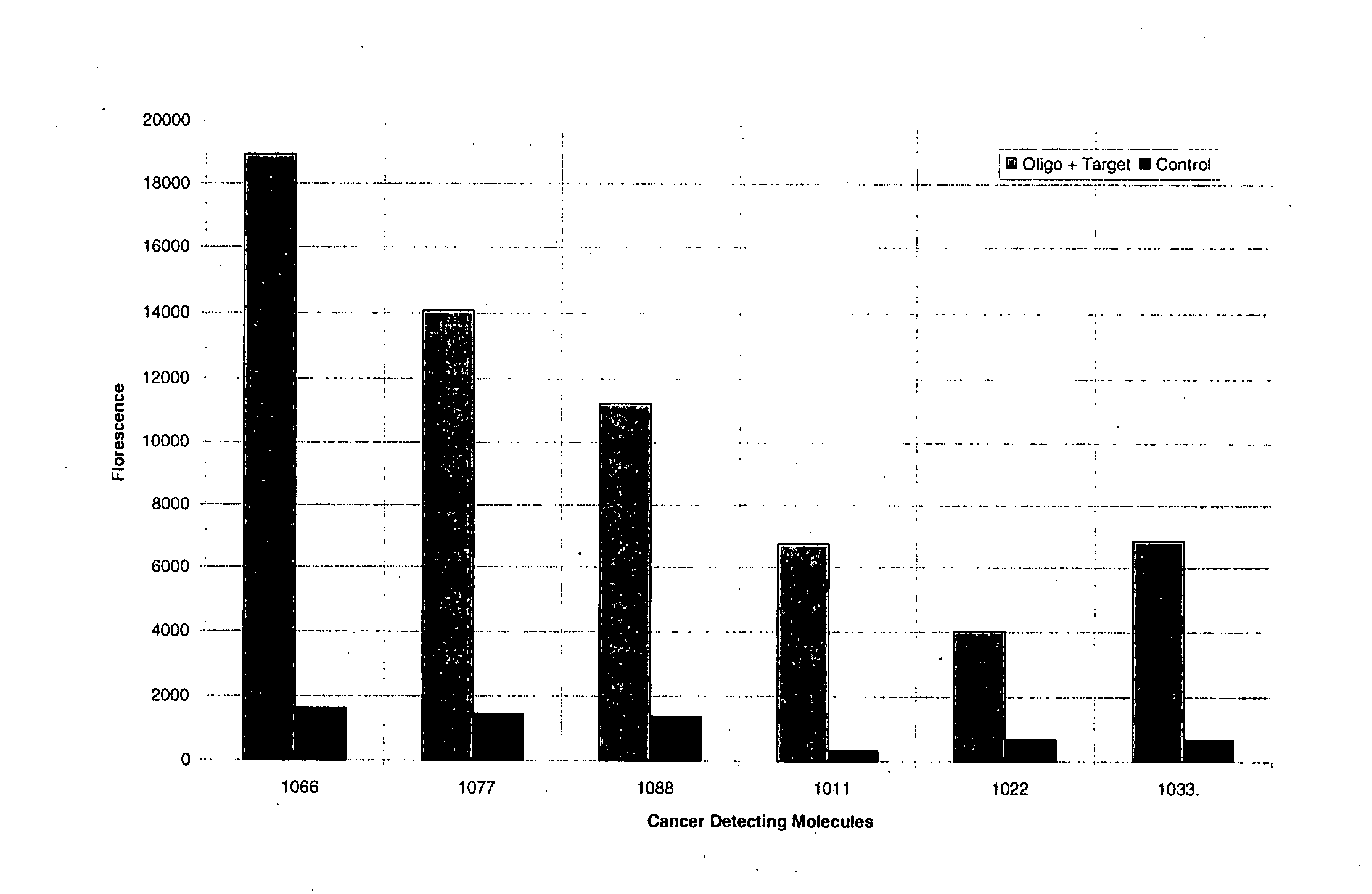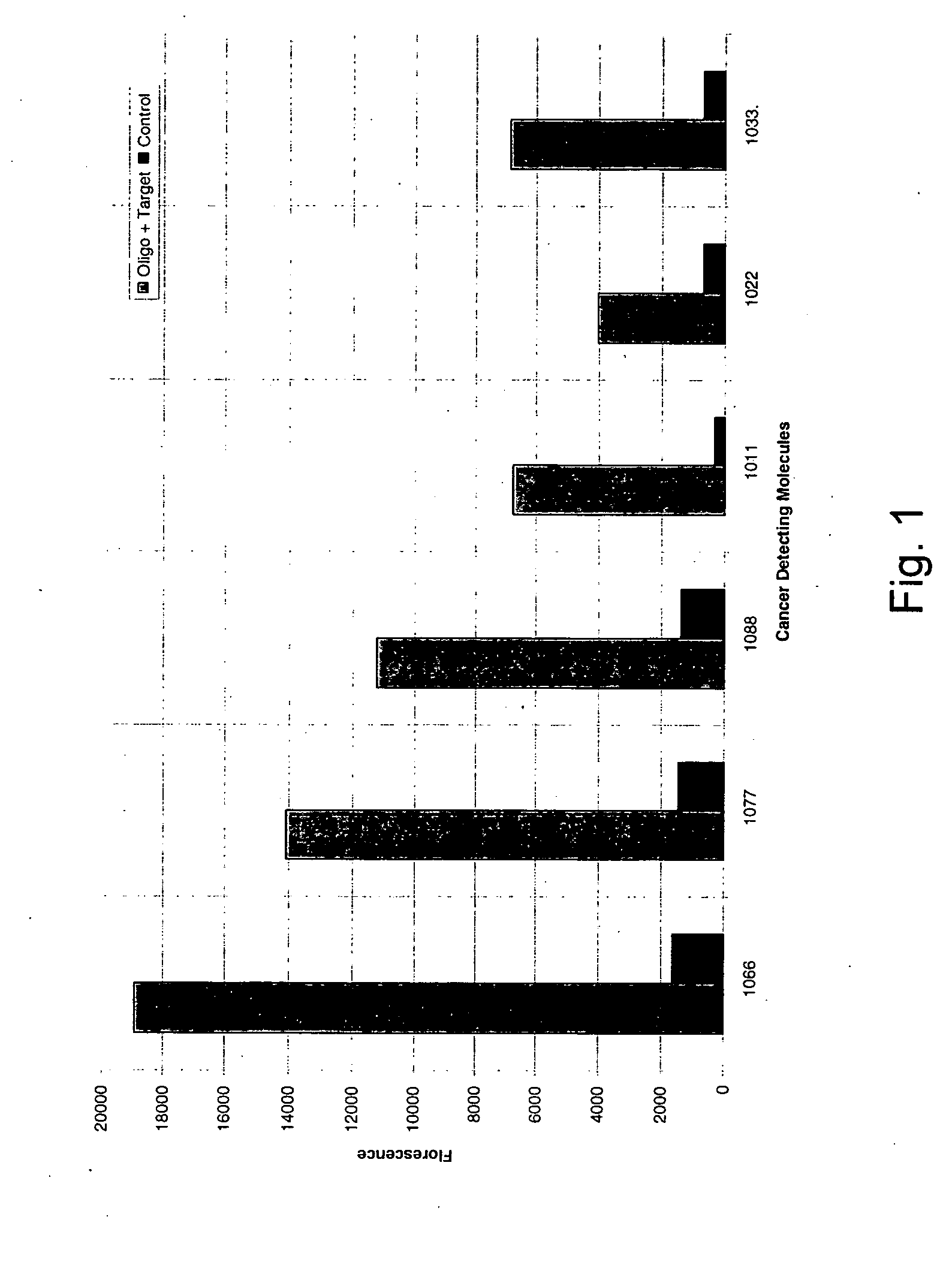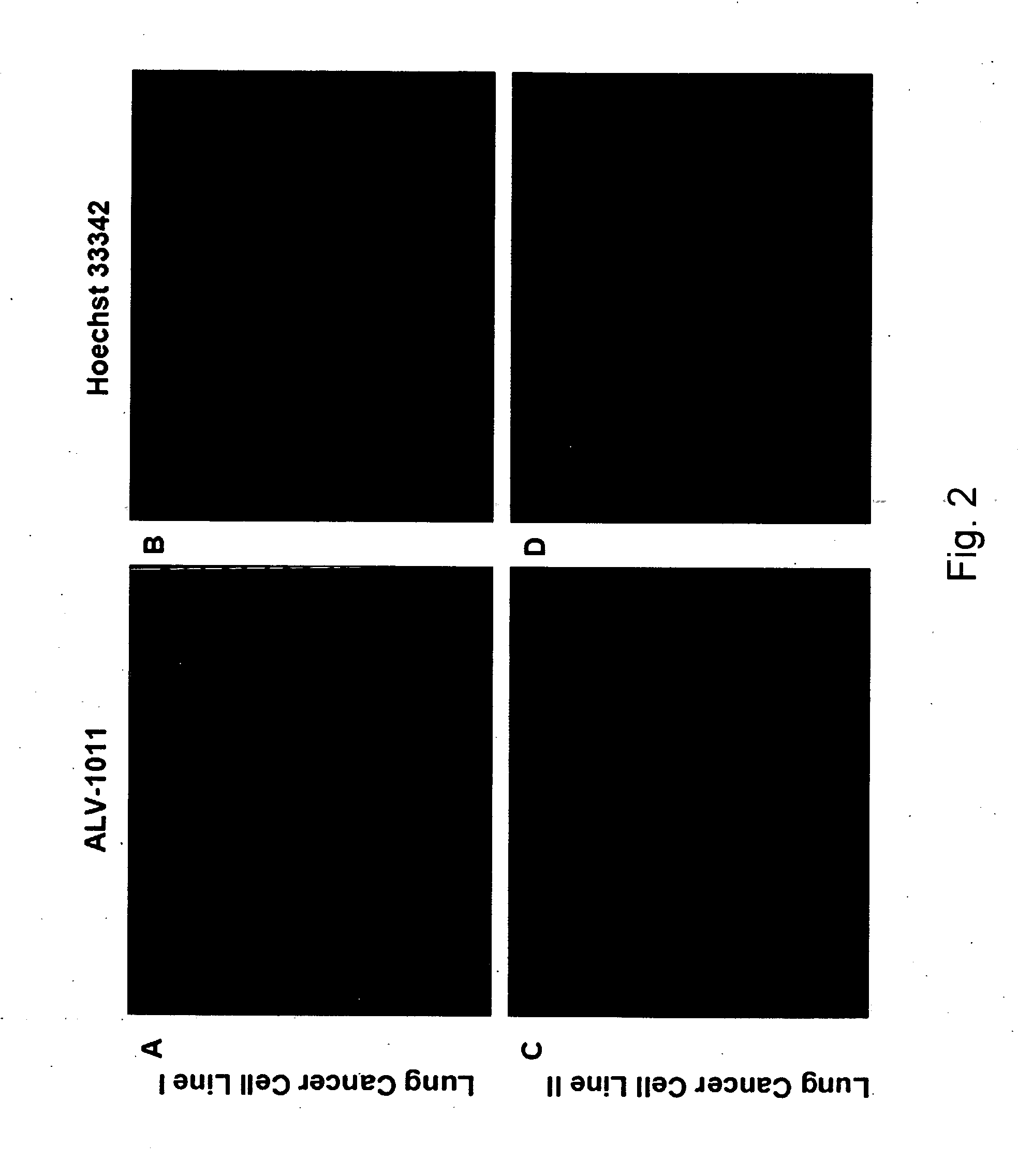Methods and applications of molecular beacon imaging for infectious disease and cancer detection
a molecular beacon and infectious disease technology, applied in the field of molecular beacons for detection of disease markers, can solve the problems of increasing global health threats, inability to reliably detect serum tumor markers for cancer diagnosis, and complicating global security, and achieve the effect of high sensitivity
- Summary
- Abstract
- Description
- Claims
- Application Information
AI Technical Summary
Benefits of technology
Problems solved by technology
Method used
Image
Examples
example 1
[0119] Molecular Beacon-Target DNA Fluorescence Testing: The method for measuring binding of molecular beacons to DNA template (measurement of MB specificity) is described as follows:
[0120] Materials includes: Opti-MEM Transfection Solution (Invitrogen), Costar 96-well black plates (eBioscience Catalog No. 44-2504-21), 1.7 mL Eppendorf tubes (Denville Catalog No. C-2170), Standard PCR Tubes, Molecular Beacons (MWG-Biotech AG), and Target DNA (MWG-Biotech AG).
[0121] The procedure is as follows:
[0122] (1) Diluting of Molecular Beacons and Target DNA: Based on MWG Oligo Synthesis Report, dilute the molecular beacons and target DNA according to the amount of transfection solution specified by the “Volume for 100 pmol / μl.” Vortex and spin. Aliquot an equal amount of an oligo solution and place in −20° C. freezer away from light.
[0123] (2) Preparation of Fluorescence Testing: Dilute each molecular beacon with a 1:10 dilution (1 μl of molecular beacon solution with 9 μl of transfection...
example 2
[0126] Molecular beacons (MBs) for detecting FluA, FluB, FluAH5 and FluAN1, as shown in Table 2, were designed based on the specific DNA sequences identified by bioinformatics, respectively. The formation of hairpin loop was designed to have 5 or 6 (most of time 5) base pairs. A general method for making a MB is disclosed by Peng et. al. (18). The MBs were then synthesized by a contractor MWG Biotech, Inc. located in North Carolina. The 5′ (or 3′) fluorofores can be any other fluorescent proteins, and the quenchers at the 3′ (or 5′) can be any other quenchers that can quench the corresponding florescent group. FIG. 28 shows conserved sequences identified by bioinforrnatics that are specific to flu virus types of FluA and FluB, and strains of FluAH5 and FluAN1.
[0127] As shown in Table 3, sequences identified by bioinformatics that are specific to flu virus types of FluA and FluB, and strains of FluAH5 and FluAN1.
TABLE 2Molecular beacons and SEQ ID NOsSEQID NO:Nucleotide SequenceOl...
example 3
[0129] Infectious Disease Detection: The flu-detecting molecules of the present invention showed specific binding to targets. Molecules such as ALV-Flu A, ALV-Flu A H5, ALV-Flu A N1 and ALV-Flu B were designed to specifically detect Flu A, Flu A H5, Flu A N1 and Flu B, respectively. As shown in FIG. 6, these molecules specifically bind to their respective targets with very low background.
PUM
| Property | Measurement | Unit |
|---|---|---|
| color | aaaaa | aaaaa |
| fluorescent microscope | aaaaa | aaaaa |
| fluorescence plate reader | aaaaa | aaaaa |
Abstract
Description
Claims
Application Information
 Login to View More
Login to View More - R&D
- Intellectual Property
- Life Sciences
- Materials
- Tech Scout
- Unparalleled Data Quality
- Higher Quality Content
- 60% Fewer Hallucinations
Browse by: Latest US Patents, China's latest patents, Technical Efficacy Thesaurus, Application Domain, Technology Topic, Popular Technical Reports.
© 2025 PatSnap. All rights reserved.Legal|Privacy policy|Modern Slavery Act Transparency Statement|Sitemap|About US| Contact US: help@patsnap.com



